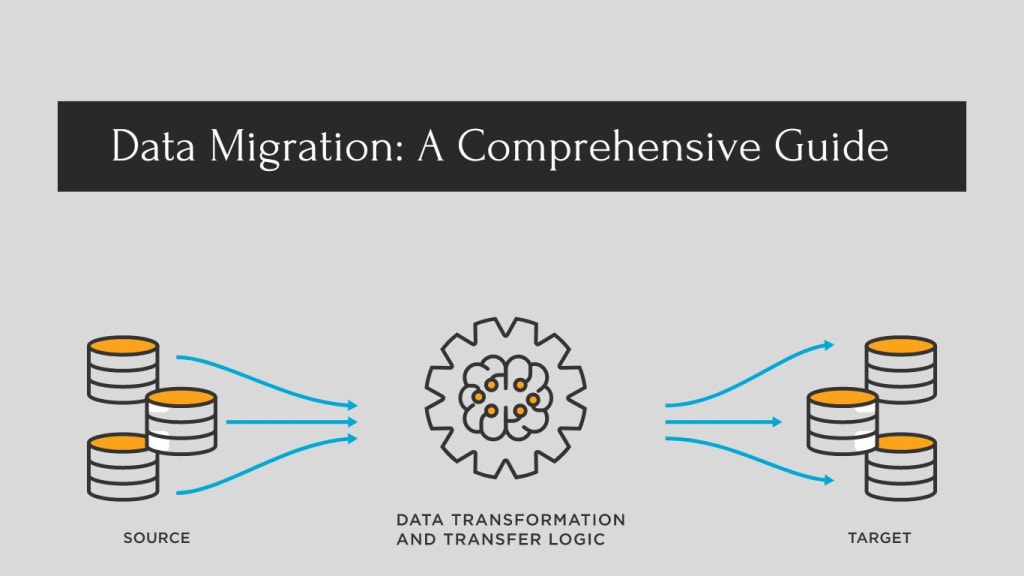Data Migration: A Comprehensive Guide
In this comprehensive guide, we will explore the various types of data migration and delve into the process of executing a successful data migration.

Data migration refers to the process of transferring data from one system or device to another. It is commonly utilized when transitioning to a different platform or when there is a need to move data to a more efficient storage location. However, data migration can present challenges such as the risk of data exposure, potential loss or corruption of data, and disruption to business operations. In this comprehensive guide, we will explore the various types of data migration and delve into the process of executing a successful data migration.
What is Data Migration?
Data migration involves the movement of data from one device to another when the existing data storage is no longer suitable for the server where the data is stored. For instance, if you have an online presence such as a website or a product, there may come a time when your server or hosting infrastructure cannot handle the increasing amount of traffic. In such cases, data migration provides a reliable option to relocate the data to another storage device. However, data migration is a complex and highly organized process. Let's delve deeper into the different types of data migration.
Main Types of Data Migration
Storage Migration: Storage migration involves the process of moving data from one storage system to another. It includes validating, duplicating, and cleaning the data. The duration of the migration process depends on the amount of data being transferred. The goal of storage migration is to gain a technical advantage rather than simply increasing storage capacity.
Database Migration: Database migration occurs when data is shifted from one database engine to another. Since different database engines may have distinct data architectures, careful planning is required when selecting the new database to ensure a seamless transition.
Application Migration: Application migration involves switching from one operating environment to another. Moving a software program can be challenging due to differences in data models, specifications, and configurations between computing environments. However, there are tools available that can bridge the gap between various technologies, simplifying the transfer process.
Cloud Data Migration: Cloud data migration is the process of moving data from local storage to cloud storage. Businesses utilize cloud computing services such as AWS, Google Cloud, or Microsoft Azure to store and manage their data in the cloud. Cloud migration offers benefits like limitless scalability, enhanced performance, cost-effectiveness, and reduced maintenance fees in various data storage scenarios.
How Does Data Migration Work?
The data migration process involves several key steps:
- Planning: The data migration process should always begin with a planning phase. This phase involves evaluating existing data assets and creating a migration plan that suits your budget and specific requirements. The planning phase includes the following steps:
- Refining the scope: Analyze how to fit existing data assets into the smallest amount of data and choose an appropriate migration plan for effective data transfer. Conduct high-level analyses of the source and target systems and consult the data users who will be directly affected by the migration.
- Assessing source and target systems: Evaluate the operational requirements of the source system and analyze how to adapt these requirements to the new environment. This analysis forms the foundation for a migration plan.
- Setting data standards: Establish data standards to identify potential issues throughout each migration phase and prevent unforeseen problems during the post-migration phase.
- Estimating the budget and timeline: Select the best migration strategy (trickle or big bang), estimate the necessary resources, and set realistic dates and deadlines. Enterprise-scale data migration efforts typically last between 6 to 24 months, based on Oracle data.
Migration Design: The migration design phase involves the following steps:
- Defining migration and testing rules
- Establishing acceptance criteria
- Assigning migration roles and responsibilities
- Identifying data migration technologies
- Implementing Extract, Transform, and Load (ETL) processes: ETL is a crucial component of the data migration process. It involvesimplementing various technologies to extract data from the source system, transform it to match the requirements of the target system, and load it into the new system. This phase often requires the expertise of an ETL developer or a software engineer with knowledge in ETL.
- Data mapping: Data mapping plays a key role in ETL. It involves the collaboration of an ETL developer, a system analyst familiar with both the source and target systems, and a business analyst with a deep understanding of the business value of the migrated data.
Data Migration Challenges
When migrating large amounts of data, there are several challenges and potential issues that can arise, including:
Risk of Business Disruption: Organizations often aim to minimize production work downtime during migration to ensure uninterrupted operations. However, achieving this can be challenging. Additionally, data modifications made during the migration process can lead to inconsistent data and system issues.
Risk of Data Loss or Corruption: Organizations need to reduce the risk of data loss or corruption throughout the migration process. Data loss can occur due to incorrect or incomplete data transfers, system incompatibility, human errors, and more. Data loss or corruption can result in financial losses, reputational damage, and regulatory compliance issues.
Risk of Exposure: Data migration introduces vulnerabilities to both the system and the data itself. During the transfer of data, there is a significant risk of a data breach. Attackers may exploit flaws in the destination storage system or the data transfer technique, potentially leading to failed, incomplete, or corrupted migrations.
Conclusion
Data migration plays a crucial role for businesses, organizations, and individuals who need to transfer their data to new devices, systems, or storage environments. However, successful execution requires understanding and addressing the challenges involved. By employing suitable strategies, precautionary measures, and meticulous planning, organizations can ensure a smooth transition of their critical data.
About the Creator
digitalranger
Digital Ranger is a Professional Technology Platform. we provide you with only interesting content. We're resolute in giving you the best of Technology, with a focus on dependability and Technology.
website: https://digitalranger.in






Comments
There are no comments for this story
Be the first to respond and start the conversation.